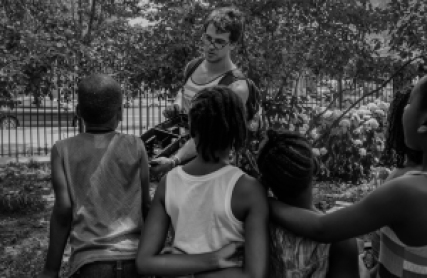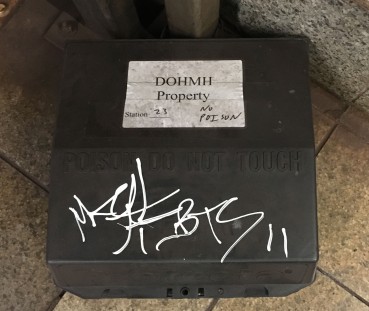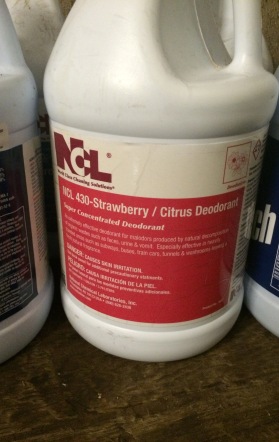I’ve spent years trapping rats across Manhattan in New York City as I study the urban evolution and ecology of brown rats (Rattus norvegicus). This fieldwork has led to many experiences, some good, some bad, and some smelly. Below are my thoughts about each.

THE GOOD:
The lunch…New York City provides endless opportunities for good eats and nothing tastes better than a good meal after (or in the middle of) a hard days fieldwork. To me, urban fieldwork has no greater perk than the ease with which my field crew and I can find delicious food of our choosing, and fast. Some favorites include Xian’s Famous’ cumin lamb noodles (so quick & soooo good), Korean fried chicken in Koreatown (for the hour long respite) or one of the many food trucks that pop up at street fairs and street corners all over Manhattan. Of course, the risk is overindulgence, as food comas can limit afternoon productivity.
The transportation…Subways may be the butt of twitter jokes these days but the available public transportation in NYC has been a huge help in carrying my gear, my team, and even my samples around the city. So far I’ve avoided having people ask me “What’s in the lunchbox?” as I transport dead rats and ice packs back to the lab! Subway travel does come with a cost, which is often not covered in grants, but I sure got full use of my unlimited metro card those summer months.
The people…While fieldwork in far-flung places may provide peace and solitude, urban fieldwork inevitably leads to socializing with all manner of people from the communities in which I work, which can be extremely rewarding. When people as me what the hell I’m doing digging in the bushes, or I pre-empt their confused looks with an explanation, I get to teach people about urban ecology and evolution everyday. In return, they often reward me with valuable information about rats in their neighborhood—or in their backyard. Plus those dozens and dozens of small interactions have forced me get my elevator pitch down.

THE BAD:
The needles…Studying rats leads me to poke around in forgotten corners of parks and alleys where rats often find a foothold, and more than once I’ve come across syringes, drug stashes, and sometimes their apparent owners. Let’s just say that after a particularly close call, I learned to always look before sticking my hand in a bush! Urban fieldwork has definitely exposed me to all aspects of the city, which includes the unfortunate evidence of drug addiction.
The projectiles…Though scanning for signs of brown rats means I often have my eyes on the ground, sometimes it becomes necessary to keep a watchful eye skyward to watch for bags, bottles, and the occasional baby diaper let loose out of apartment windows. While the trash strewn around certain housing complexes indicates that defenestration is a common practice, I can’t help but suspect that sometimes they are aimed at me!

The vandalism…One of the most frustrating aspects of fieldwork in cities is that I can expect a not-insignificant percent of my gear will be messed with, vandalized, or stolen. Regardless of how well I’ve tried to hide my rat traps, it seems one of NYC’s 8.5 million inhabitants finds them. People seem to enjoy kicking my traps; sometimes they get thrown away (I’ve pulled them out of trash bags) and occasionally graffiti artists tag them. Even worse are horror stories from urban botanists losing entire growing plots to homeless camps and digging dogs!
THE SMELLY
The poop…Poop smells, shocker right?! As with the needles (see above) people with nowhere to go find dark and secluded spots when they need to go – behind bushes, around corners, or sometimes at the very end of subway tracks…apparently. All places I go to find my rats. Needless to say I’ve come face to face with my fair share of urban turds (Turdis urbanus?).
The trash…The rats follow the trash in New York, and I follow the rats. So inevitably I’ve worked around mountainous garbage piles and putrid puddles of their leftover goo, seeped from bags on hot days or squeezed out of the compactors and trash trucks. Yeah, trash smells bad.

The death… The smell of a dead animal is unlike any other and years of trapping rats have made me intimately aware of death’s cloying scent. In my lab, I will forever be remembered on the wall of shame for “misplacing” a rat body, once destined for the freezer, in my backpack for far too long. Said rat was eventually found when the “strange smell in the lab” was too much to bear and our search for the culprit ended in my field backpack in front of everyone. The backpack is no longer with us.
The bonus: Shout-out to the very special smell of NYC subway strawberry-scented cleaning solution, which has dug its way so deep into my brain that whenever I catch a whiff walking down the A train stairs I’m immediately transported to those 100° days trapping rats in those underground and seemingly unventilated stations.

- The Good, The Bad, and The Smelly: Fieldwork in the Big Apple - October 19, 2018

Leave a Reply